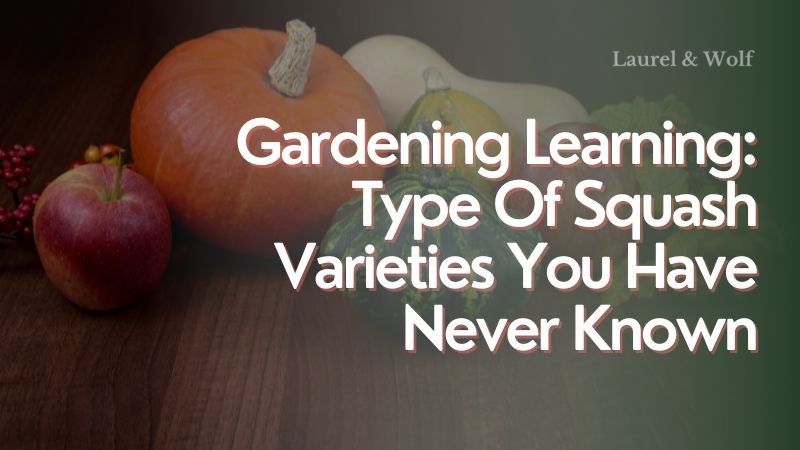Growing squash is one of the easiest ways to achieve notable results in your garden, which can be preserved for the winter season. It’s essential to choose the right type of squash for your local climate. This allows you to yield summer squashes during the hot seasons, and then harvest winter squashes mainly in the fall, ready for storage throughout the cold months.
Everybody there concentrates on zucchini; however, nobody ever realizes how many other squash types exist. Winter squash was out of favor for a long time; however, recently, individuals are more concerned with food preservation as well as nutritious meals, it is making a return.
Whenever you desire to attempt producing a few various sorts of squash vegetables, let us dig into their universe to discover squash vegetation classifications as well as how to cultivate most of those distinct squash varieties.
Things You Should Know About Type of Squash Varieties
Whether the type of squash varieties are indeed a fruit and perhaps a veggie must be addressed. Many people believe squash is a vegetable since we cook this so often. On the other hand, squash is indeed a fruit since it has seeds and blooms.
Here’s another puzzle. People group gourds, pumpkins, and squash together since they are identical botanical relatives, namely Cucurbitaceae. Pumpkins, on the other hand, were indeed not a kind of squash.
Squash is typically cultivated in middle spring through slightly earlier summertime and matures approximately 50 to around 100 days according to the type. Although there is a squash for summer and squash for winter, these are warm-weather vegetables with numerous varieties accessible all year.
Therefore, what are several creative approaches to prepare squash? This kind is a tasty sautéed side dish. They might be roasted, grilled, or pureed into stew. After all, spiralizing summer squash-making zoodles is a standard nutrition tip. Let us show you the many varieties of squash.
How to Choose the Suitable Type of Squash Varieties to Grow
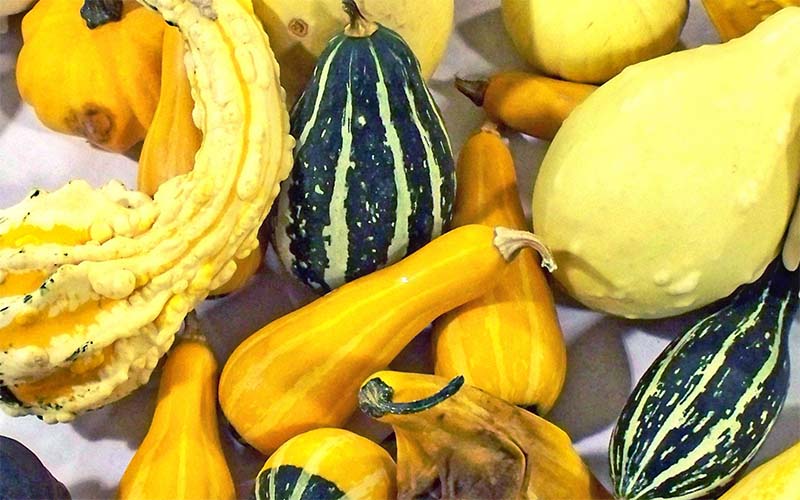
Before we go into most squash varieties, we would like everyone to know how to pick which types to plant and determine which classes to grow.
Pick Type of Squash Varieties for Specific Area
Before you begin planting, it is indeed a good idea to familiarize yourself with your planting region. How long does your harvest season last? And what were the typical daytime temperatures in your area?
These are essential concerns to answer before gardening since not every vegetable develops effectively in all climates. If you possess a brief planting condition, you will need to look for squashes that mature in a relatively short period of duration. If you reside anywhere with an extended blooming period, you will enjoy greater growing possibilities.
Consider About What Type of Squash Varieties Your Family Members Eat
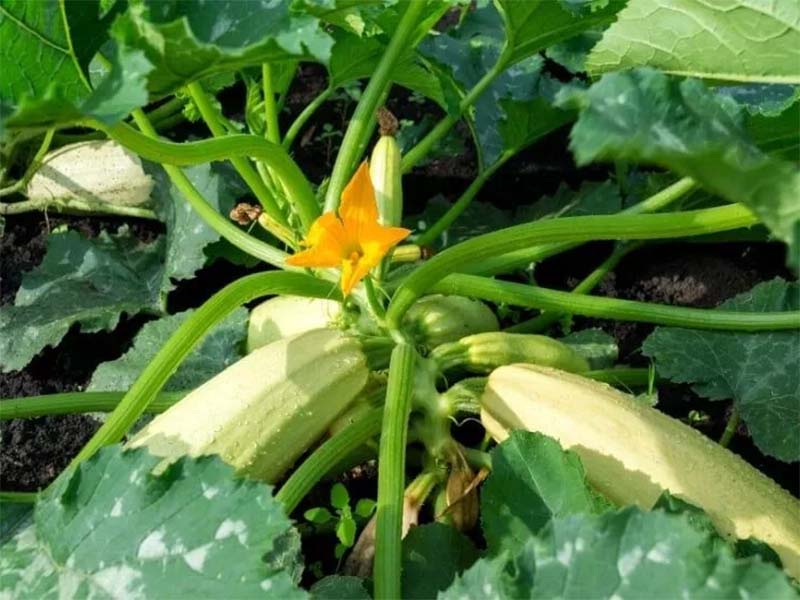
You should constantly consider whatever your family consumes. End up making sure to incorporate squash if your parents enjoy it. Incorporate some of your children’s preferences initially before venturing into uncharted territory.
It would be alright to dedicate a place to cultivating different vegetables you’ve rarely experienced previously. Still, you should constantly keep in mind that you have enough capacity for many meals your family consumes the best before making room for other items.
Would You Like to Save Type of Squash Varieties Seeds?
If you would like to conserve seeds, ensure you cultivate the proper kinds of sources. Instead of mixed origins, you ought to plant traditional seeds.
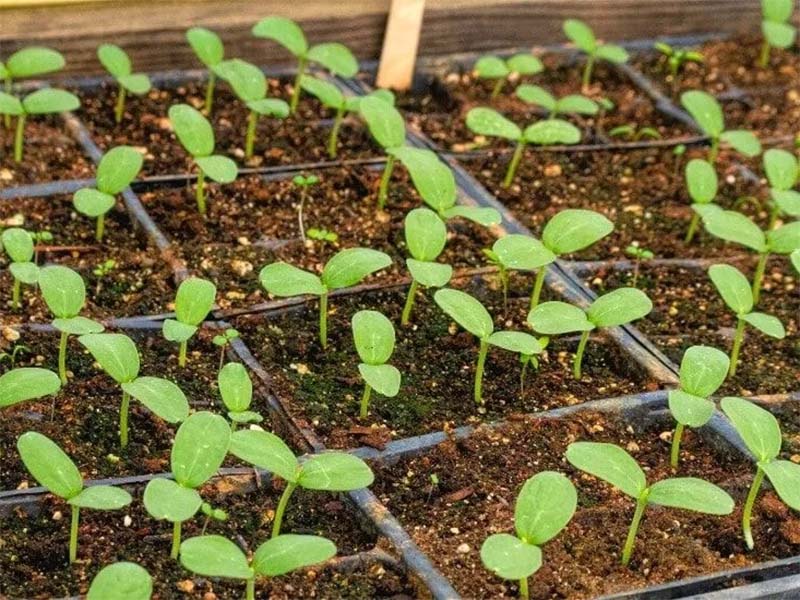
Why?
Most hybrid varieties will not constantly cultivate if you attempt to store the seeds and plant crops the following year. You are unlikely to have the identical plant you planted the preceding year, and you may not get edible fruits.
How Much Growing Room Do You Have for Your Type of Squash Varieties?
Squashes are for their enormous size; some branches may grow to be nearly 14 inches in length. Therefore, if you do not have a lot of room, you should cultivate types that do not develop enormous vines. There seem to be minimal squash varieties. You might not get to bother about that when you possess every area on the planet!
Type Of Squash Varieties
There are generally two types of squash (for the summer season and winter season), every with specific variants. Both of those are squashes; however, they range in fundamental ways that you should be aware of before selecting seeds to plant. Here might be how to identify the difference between the type of squash varieties.
Summer Type of Squash Varieties
Delicate-skinned squash or fragile squash seem to be the names given to those squash types. They feature juicy meat and smooth texture and maybe harvested continuously from middle to last summertime.
You can enjoy most summer squashes freshly; they are deliciously uncooked, grilled, sautéed, or roasted. They do not keep properly in the freezer, lasting only about a week. We may consider freezing them but be careful you tear them completely.
Summer squashes mature rather quickly. Following planting the seeds, crops ought to be available to be harvested 50-66 days later. It is typically preferable to collect the squashes while they are immature; if you can keep them on the plant for very long, they become harsh.
Cousa
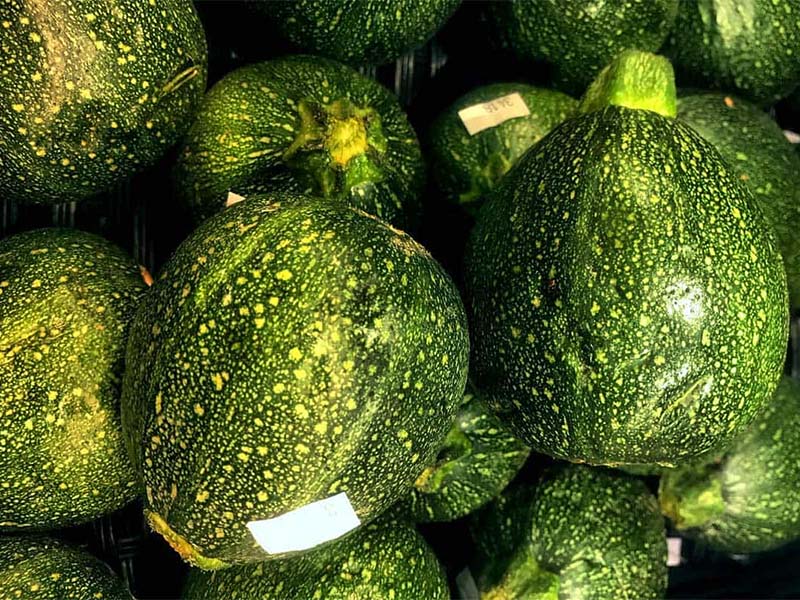
Cousa squash resembles a more significant, smaller zucchini. This coloration is brighter, as well as the taste is somewhat pleasant. Cousa squash (and several summer squashes) possess a light covering, which is easier to strip and chop through when contrasted to the other winter squash types.
Crookneck Squash

Since it slackens and bends place at a single end, each form of squash seems simple to identify. It is often canary in appearance as well as possesses a mellow taste comparable to golden summer squash. Most feature a rough ground, while those around feature a flat finish. It is indeed ideal for slicing or chopping into stews, sautéed veggies, or stir-fries.
Chayote (mirliton)
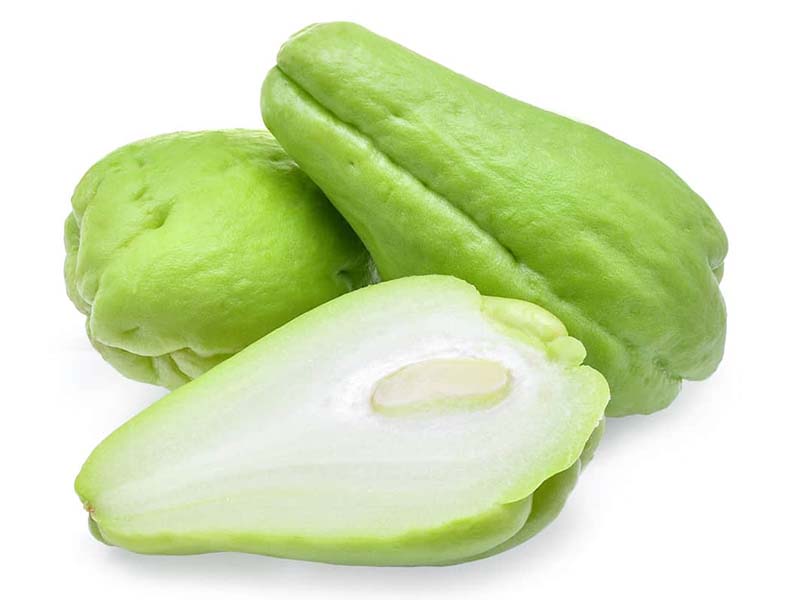
The color of chayote squash resembles greenish, having wrinkles and a rough surface; however, everything may not do its credit. Inside the produce section, you might readily confuse chayote squash with peppercorn. However, something that is also known colloquially as vegetable plum. Its look is one-of-a-kind.
Pattypan Squash
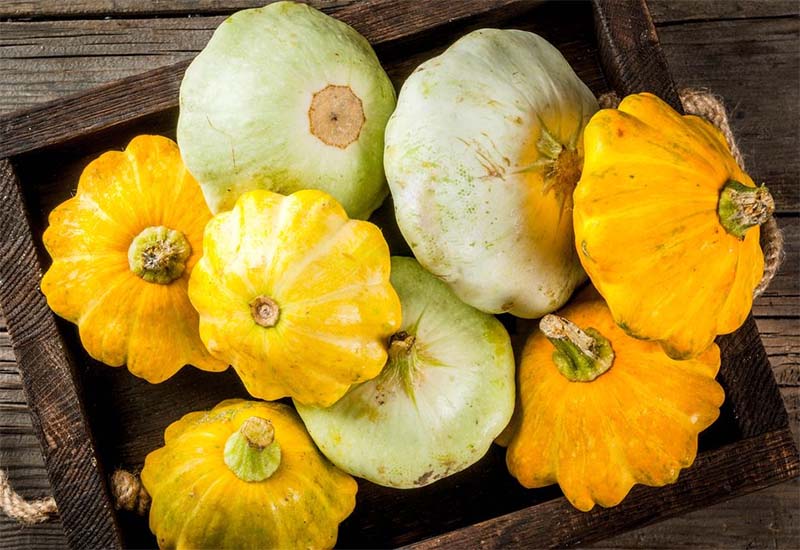
This kind of might is not an understatement to suggest that the pattypan vegetable resembles tiny spacecraft. These are thin and elliptical, with minute spines around all over the border. Pattypan squash could be in greenish or golden varieties, and you can cook them just like every other squash. Whenever consumed raw, its flavor might have somewhat of a sting or crunchiness to it.
Round Zucchini
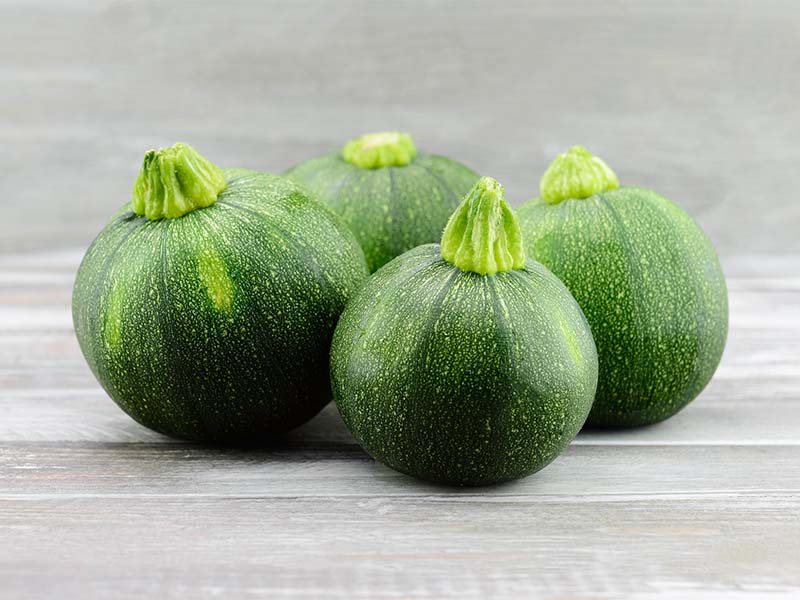
Round zucchini, often known as eight-ball vegetables, is remarkably comparable to traditional zucchini. The tastes complement each other. However, round zucchinis seem better suited for dishes that require filling them with parmesan, other vegetables, or other delectable things.
Zephyr
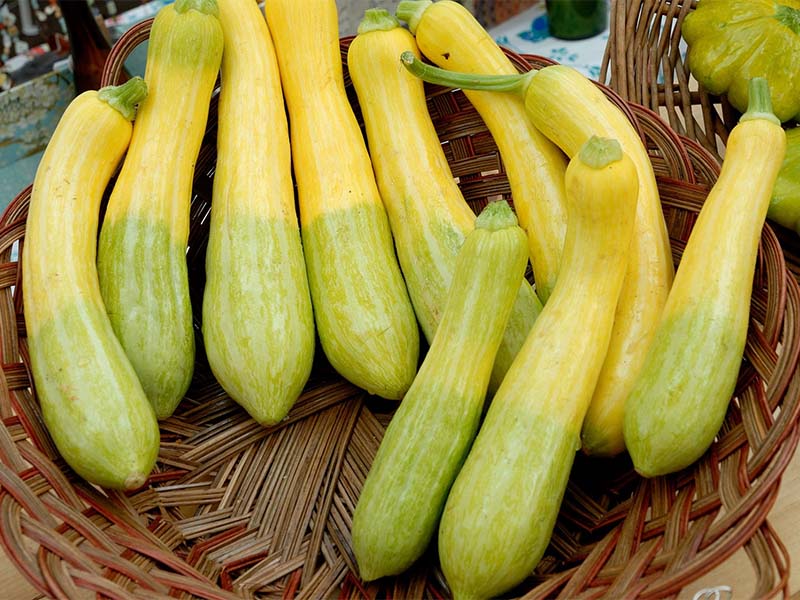
This zephyr squash seems to be a several-way combination of golden crookneck, delicata, as well as golden acorn squash. This squash is cylindrical and yellowish, with a hint of greenish at the bottom. It tastes nice and rich.
Zucchini
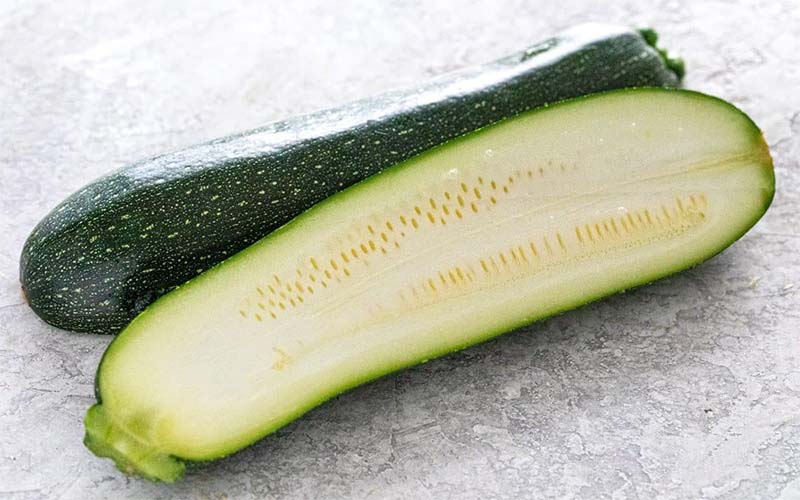
Although zucchinis have become accessible all season and represent a mainstay in the vegetable section from January 1 To December 31, their flavor is the finest and is tastiest, mostly in summertime. They’re delicious fresh in salads, sautéed in a pan, or grilled with garlic and chili.
Winter Type of Squash Varieties
Winter squashes include those with firm skin. Whenever you sow the crops, you will be able to pick those squashes throughout midsummer through fall and occasionally through the winter season.
Winter squashes feature thick shells and firm meat, allowing them to be preserved and refrigerated all winter. Our forefathers previously produced vast quantities of winter vegetable generations since you might keep them for months within what seems like a basement area following appropriate drying and consumed all wintertime.
It is not typically good to eat these winter vegetables uncooked because they may not be delicious. Rather than boil or grill them, make substantial stews, or bake a dessert with them.
Winter squashes require 60-111 days to mature when you can plant the seeds, regardless of the type. They will not remain to develop when collected, so remember of their development.
Acorn Squash
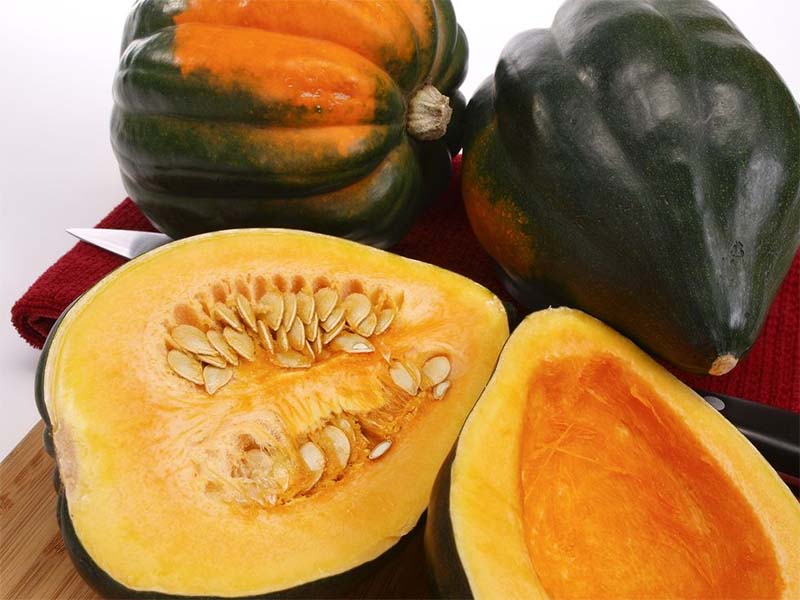
Acorn squash, this first-ever, if not very initial, variety of squash throughout America, develops to reach approximately 1-3 lbs in size. They are formed like acorns, even as the title suggests. Their body seems to be a mix of golden and dark green. An excellent combination of both hues indicates that it is nutritious; excessively yellow means fully ripe.
Banana Squash
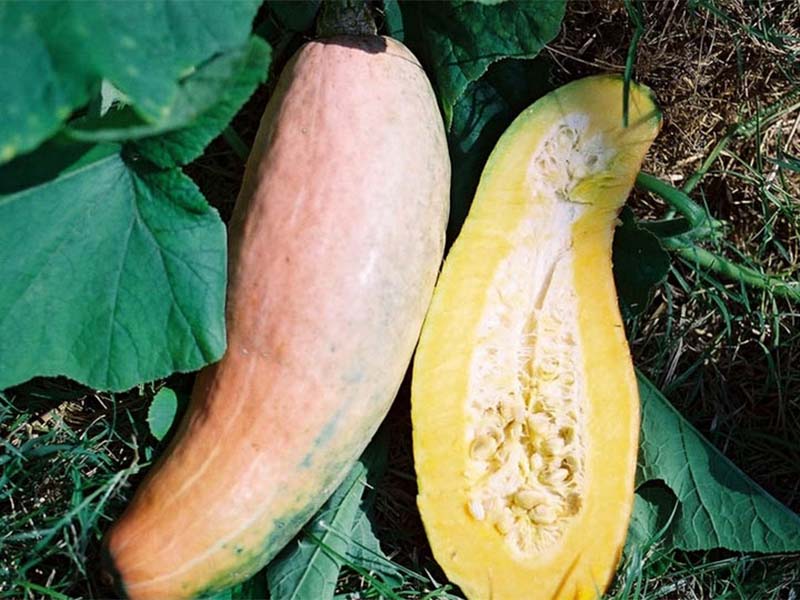
Banana squash has been cylinder-shaped with a bright pinkish-orange color. They are accessible throughout the year; however, they are already in harvest throughout the winter months. They may develop to be three feet extensive. When consuming or preparing, you can remove the rigid shell; just the meat is edible.
Butternut Squash
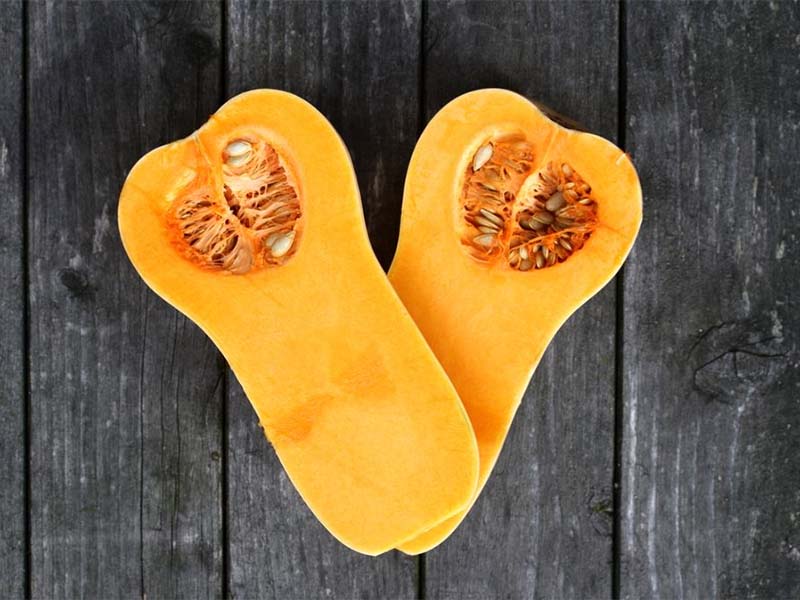
Butternut squash, among the most famous winter squash types, is accessible throughout the year, but a golden period mainly during winter or fall. Those have a bright brown surface, which is somewhat orange in color. The meat, however, has a bright orange color.
Buttercup Squash
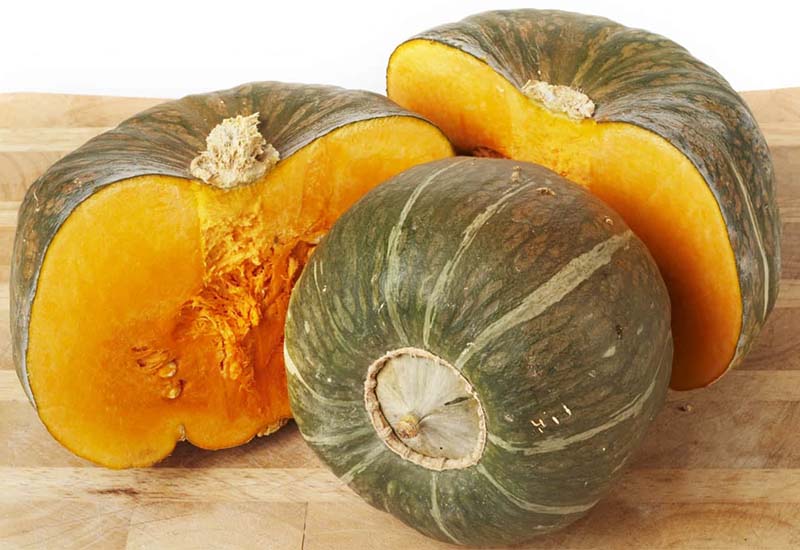
Buttercup squash features orange meat with mottled skin and from its form, which resembles a hazelnut buttercup. This meat is delicate and delicious to blend for stew. This squash is likewise frequently chopped and grilled as a tasty dipping sauce.
Carnival Squash
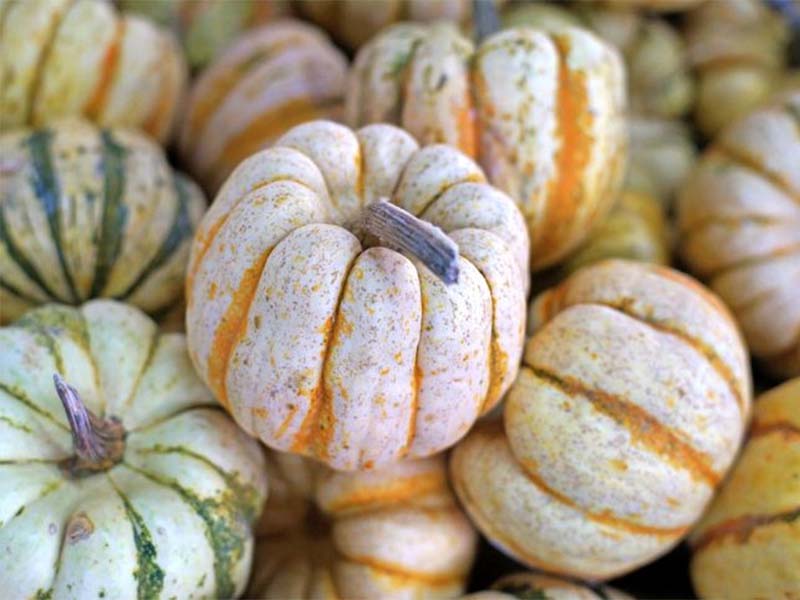
Its greenish and scarlet flecks distinguish carnival squash. You might use them as decorations because of their distinctive and amusing look; however, they are also excellent to consume, with a rich and nutty taste.
Delicata Squash
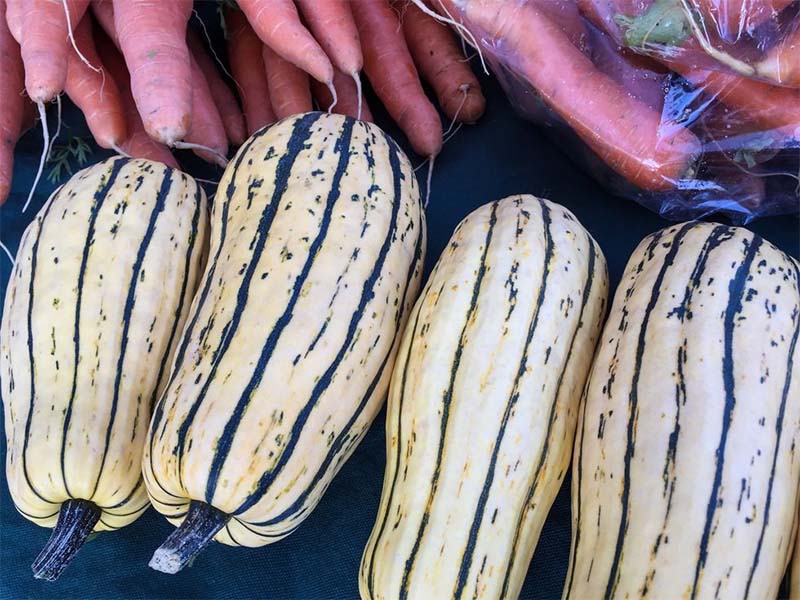
These squash are also cylinder-shaped. However, these have tiny green lines running throughout their wrinkles that make them stand out. Because you will not have to remove the shell when preparing, it is among the better low-maintenance varieties of pumpkin to work. When you cut it up then bake it, its delicious taste emerges.
Kabocha
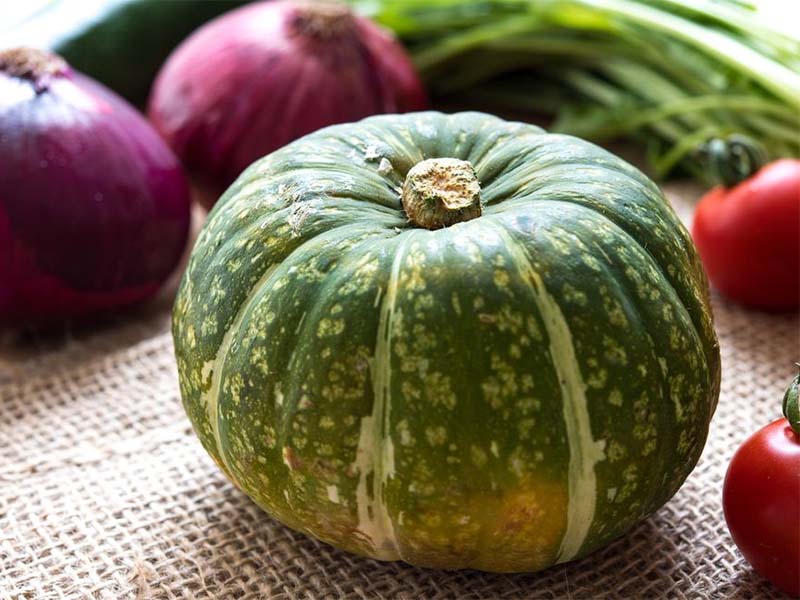
This kabocha squash, often known as an Asian pumpkin, seems to be a relatively small variant having a green shell. It has a sweetness comparable to butternut or acorn squash, featuring distinct buttery undertones. You may eat the peel as well as the slices in veggie fries.
Sweet Dumpling Squash
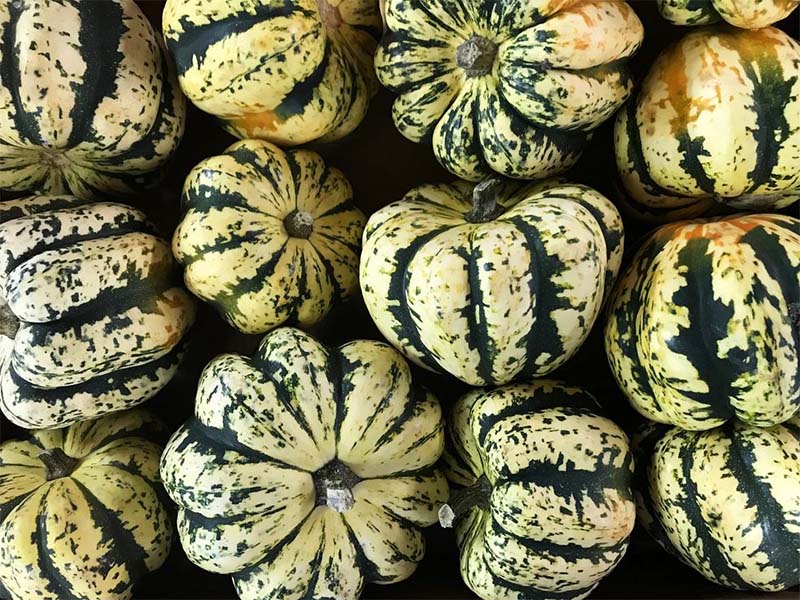
Sweet dumpling zucchini is indeed a tiny whitish-yellow vegetable having green coloration that mimics a miniature pumpkin that generally weighs as little as a kilogram. It is indeed yummy, as the title suggests, and has a moderate flavor.
Best Garden Gloves You Will Need When Harvesting Type Of Squash Varieties
Purchasing the latest gardening gloves appears to be a straightforward task. The essential component would be that your gardening gloves are pleasant and provide enough coverage against nudges, bites, and stings. We combed the web for the best combinations throughout each sector, for everybody, at each price point.
Please consider viewing our top recommendations for the most delicate farming gloves below.
G & F Gardening Gloves

G & F Gardening Gloves
Don’t be fooled by the low market value: those linen gloves are remarkably long-lasting. They are intended for various types of agricultural operations and also have rubber-coated hands to guard against tiny needles and shrapnel.
They are comfy enough to perform for the whole day, including enthusiasts ranging from technicians to agricultural and skilled landscapers. They might not keep them indefinitely (many customers get four to five weeks of intensive utilization out of those), but they pack in a twelve-pack for convenient switching.
Airmarch Garden Glove

Airmarch Garden Glove
Those waterproof gloves’ polymer pads transform your hands into little shovels, and that they are perfect for excavating, trimming, and oxygenating dirt while you operate. Although they appear inconvenient to use, reviews report they should not stand in the manner and are beneficial for movement difficulties such as gout. Then, as an additional benefit, Whenever you use these, you will experience like Wolverine.
Amazing Stuff For You! Garden Gloves

Amazing Stuff For You! Garden Gloves
Those multipurpose gardening gloves are ventilated and strong woven fabrics featuring an extra-durable but elastic protection covering the hands and fingertips. The surface is gripping but not tacky, enabling you to manage equipment and crops easily.
We particularly enjoy that those durable, multipurpose mittens are washer washable. They are available in comparatively tiny, moderate, and larger sizes, and each order includes two sets. Whenever they are uncomfortably dirty or soiled to use, throw these in the machine and fetch a second pair.
Conclusion
The type of squash varieties universe may be perplexing because several types of squash varieties exist. And the nicknames are frequently employed simultaneously. Summer squash includes zucchini and summer squashes with labels including yellowish squash, crookneck, and zephyr. Several people mistake some of them for other varieties of zucchini.
Since you might observe, squash will be more than simply zucchini. These have a few varieties of squash, which you may plant in your backyard, ranging from summertime to wintertime squash. Consider planting a mixture of those squashes throughout your upcoming planting season to pick your best!

